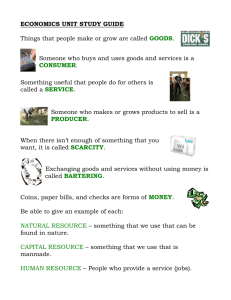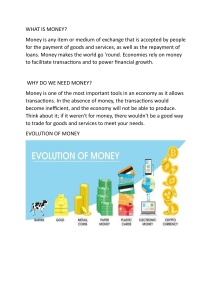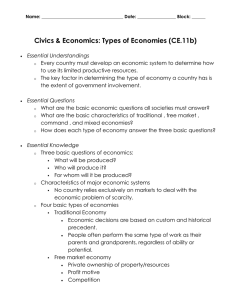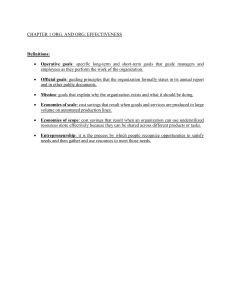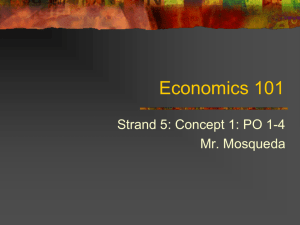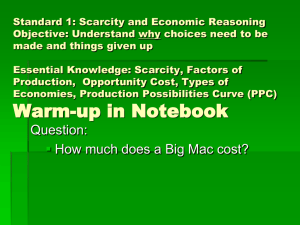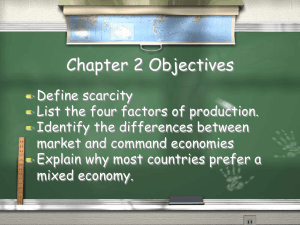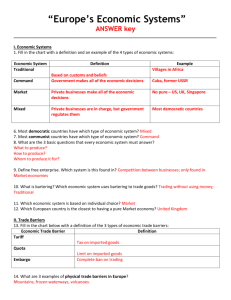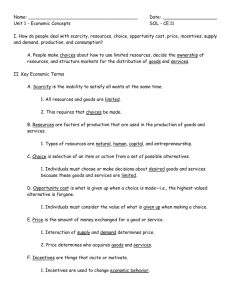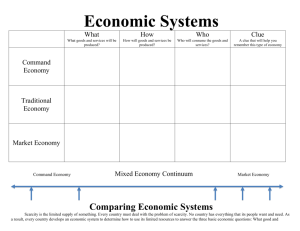Exploring Economics: Key Concepts & Trade
advertisement
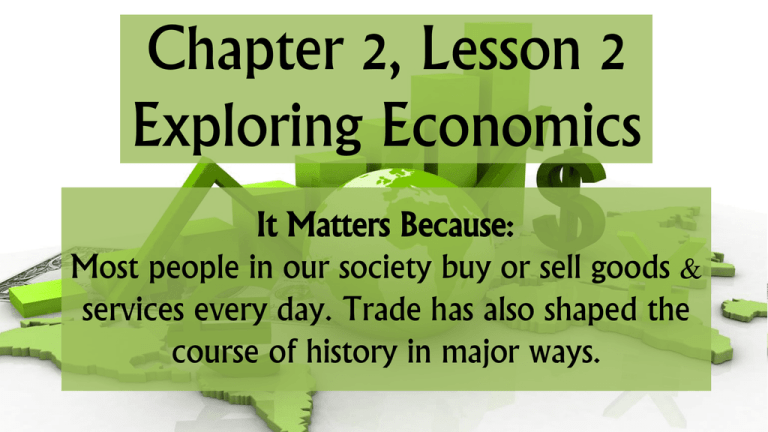
Chapter 2, Lesson 2 Exploring Economics It Matters Because: Most people in our society buy or sell goods & services every day. Trade has also shaped the course of history in major ways. I. What is Economics? A. An economy must answer three key questions: 1. What goods and services should we offer? 2. How should we create & distribute these goods and services? 3. Who will use these goods & services? B. Different economic systems worldwide answer these questions differently II. Resources & Production A. Producing goods & providing services require resources 1. Four major types of resources: a. Land – land includes property, & the natural resources within For example: b. Labor – ability of people to do work Where does labor come from? c. Capital – money & goods used to produce goods & services How is capital raised? d. Entrepreneurship – willingness to run a business & take risk What risks? II. Resources & Production B. A fifth resource is technology. 1. Technology - applied knowledge to accomplish a task or make a task simpler 2. Examples of technology in: a. 2015? b. 2000? c. 1950? d. 1900? III. Supply & Demand A. Principle of supply & demand determines value of goods & services 1. Supply – amount of a good or service available 2. Demand – amount of a good or service desired 3. At what point would the cost of a good or service be at its highest? 4. At its lowest? B. Scarcity - shortage of a resource 1. How does scarcity affect cost? C. Opportunity cost - what someone must give up in order to make or buy a good or service 1. For example? IV. Types of Economies A. Traditional – based on custom; children often do same work as parents 1. Community property is common 2. Bartering is common B. Command – government decides what goods & services are produced and who will receive them 1. Government often chooses people’s careers for them IV. Types of Economies C. Market – people choose what to produce, sell, buy. 1. Trade occurs in open market 2. What is an open market? D. Mixed – blend of command and market. V. Measuring Economies A.Economies experience high & low points 1. The business cycle describes these peaks & troughs B. An economic boom is a time of growth C. Recession is a time when the economy does not grow or even shrinks D. Inflation – goods & services cost more, so money buys less VI. Why Do People Trade? A.Countries trade with one another to gain goods they cannot or do not produce 1. Trade between countries is called globalization B. Trade between countries consists of exports & imports 1. Export – goods shipped out of a country & sold somewhere else 2. Import – goods brought into a country from somewhere else VII. Evolution of Trade A. Early trade took place through bartering 1. Barter – trading goods & services for other goods & services B. Over time, money was invented 1. Money has a definite value 2. Easier to carry than most goods C. What are some barriers to trade?
